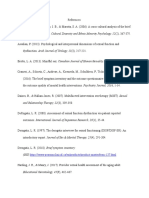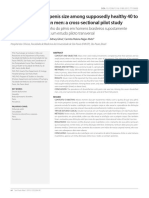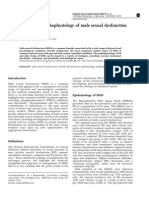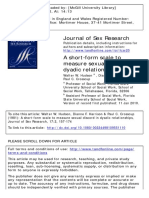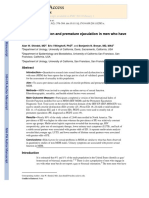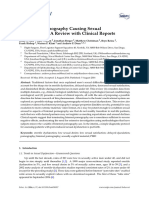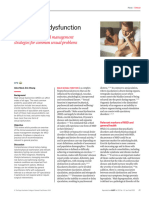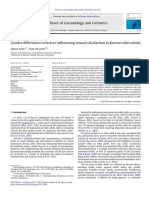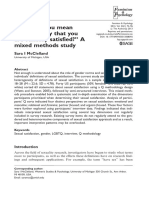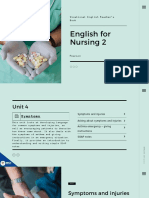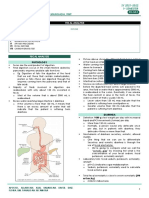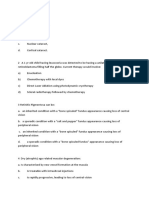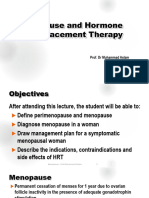Accepted Manuscript
Title: Sexual Satisfaction: an Opportunity to Explore Overall Health in Men
Author: Borja García Gómez, Eduard García Cruz, Giorgio Bozzini, Juan Justo
Quintas, Esther García Rojo, Manuel Alonso Isa, Javier Romero Otero
PII: S0090-4295(17)30697-0
DOI: http://dx.doi.org/doi: 10.1016/j.urology.2017.06.031
Reference: URL 20529
To appear in: Urology
Received date: 6-3-2017
Accepted date: 20-6-2017
Please cite this article as: Borja García Gómez, Eduard García Cruz, Giorgio Bozzini, Juan Justo
Quintas, Esther García Rojo, Manuel Alonso Isa, Javier Romero Otero, Sexual Satisfaction: an
Opportunity to Explore Overall Health in Men, Urology (2017), http://dx.doi.org/doi:
10.1016/j.urology.2017.06.031.
This is a PDF file of an unedited manuscript that has been accepted for publication. As a service
to our customers we are providing this early version of the manuscript. The manuscript will
undergo copyediting, typesetting, and review of the resulting proof before it is published in its
final form. Please note that during the production process errors may be discovered which could
affect the content, and all legal disclaimers that apply to the journal pertain.
�Sexual satisfaction: An opportunity to explore overall health in men
AUTHORS:
Borja García Gómez, 12 de Octubre University Hospital, Madrid, Spain.
Eduard García Cruz, Clínic University Hospital, Barcelona, Spain.
Giorgio Bozzini, IRCCS Policlinico san Donato, Milano, Italy.
Juan Justo Quintas, 12 de Octubre University Hospital, Madrid, Spain.
Esther García Rojo, 12 de Octubre University Hospital, Madrid, Spain.
Manuel Alonso Isa, 12 de Octubre University Hospital, Madrid, Spain.
Corresponding author: Javier Romero Otero, 12 de Octubre University Hospital,
Cordoba Avenue, 28041, Madrid, Spain.
jromerootero@hotmail.com
ABSTRACT
Objective
The primary aim was to evaluate the use of sexual dissatisfaction as a marker of poor
overall health. Secondary objectives were to assess the effect of age on this measure and
the utility of the Brief Sexual Symptom Checklist (BSSC) for general practitioners
(GPs) and patients.
Material and Methods
Multicenter, cross-sectional study conducted in Spain among men aged ≥50 years
presenting with mood disorders and/or cardiovascular comorbidities (hypertension,
dyslipidemia or diabetes) visiting a GP for any reason. A group of men without these
comorbidities was also analyzed.
Main outcome measures
1
Page 1 of 22
�Prevalence of sexual dissatisfaction, based on the comorbidities analyzed (type, number
or their absence) and problems with sexual function in dissatisfied men (overall and in
men aged < 60 or ≥ 60 years).
Results
718 men aged 61.7 ± 7.1 years who presented the analyzed comorbidities participated,
69.8% of whom were sexually dissatisfied. Men without comorbidities (n = 144) were
younger and had lower prevalence of sexual dissatisfaction (54.2%; P = 0.001). Sexual
dissatisfaction increased with age. Having these comorbidities (especially mood
disorders) significantly increased the likelihood of sexual dissatisfaction after adjusting
for age. Erection problems and lack of interest in sex were the most reported problems,
independently of the presence of comorbidities. Differences in the prevalence of these
problems were found in men with/without comorbidities after splitting the population
into two age groups. GPs and dissatisfied patients found the BSSC useful and easy to
use.
Conclusions
Assessment of sexual satisfaction and related sexual problems using the BSSC could
help in approaching men’s overall health. Further research is needed.
KEY WORDS (MeSH):
Sexual dysfunction; Sexual satisfaction; Comorbidity; Men’s health
INTRODUCTION
Sexual dysfunction severely affects quality of life, well-being and satisfaction.(1) Some
sexual dysfunctions are a result of undiagnosed conditions (organic/medical factors
and/or multiple psychological or interpersonal factors)(1), and therefore sexual health
assessment may not only benefit well-being and longevity, but may also be a useful tool
2
Page 2 of 22
�that could help to reduce morbidity and mortality.(2, 3) Given its relevance, sexual
problem identification has been regarded as a routine and necessary aspect of medical
care.(1, 4) Involvement of the General Practitioner (GP) in sexual health is of especial
relevance as this is the first point of contact in many health care systems.
A wide variety of instruments, mainly brief self-report inventories, have been developed
for the purpose of identifying and assessing sexual problems in men.(5, 6) In this sense,
the main focus has been on erectile dysfunction (ED), whose relationship with the
presence of comorbidities has been extensively analyzed.(7-11) In fact, ED is nowadays a
recognized indicator of men’s overall health(12, 13), and as such it offers a unique
opportunity to undergo medical examination.(7) The Sexual Health Inventory for Men
(SHIM) is the self-reported questionnaire for ED screening that is most commonly used
both in research and in the clinical practice.(14, 15) However, this tool might not be useful
for this purpose in every cultural environment if it lacks proper validation. This is the
case of Spain, where it has been reported that the SHIM is not routinely used in the
clinical practice. The reasons include the use of direct and technical language which
may not always be appropriate at every socio-cultural level, thus limiting its theoretical
self-checklist capability(16). Other alternatives have been proposed. For instance,
Moncada et al. demonstrated that the Fugl-Meyer Life Satisfaction Questionnaire
(LISAT-8) and a composite variable made up of three of the items analyzed (sexual life
was one of them), could be used as a valid screening tool for ED in everyday clinical
practice.(16)
In 2004, the International Consultation on Sexual Medicine (ICSM) endorsed a
screening checklist, suitable for use in the Primary Care settings, known as the Brief
3
Page 3 of 22
�Sexual Symptom Checklist (BSSC).(3) This questionnaire is simple and quick-to-answer
(less than 1 min), and addresses the presence of sexual problems by initially assessing
the patient’s level of sexual satisfaction with a single question. Precisely, sexual
satisfaction is considered to be the main outcome measure in the assessment of the
sexual health(1). According to this questionnaire sexual dissatisfaction would be an
indicator of poor sexual health, thus opening the door to further investigation of
problems that involve sexual functioning. However, it is unknown whether sexual
dissatisfaction, as assessed by this screening tool, would also be associated to poorer
overall health.
We performed an exploratory analysis of prevalence of sexual dissatisfaction as
assessed by the BSSC among patients with comorbidities known to be common in men
with sexual dysfunctions, such as cardiovascular risk factors/conditions (hypertension,
dyslipidemia, diabetes) or mood disorders, including depression, with the aim of
evaluating the use of "sexual dissatisfaction" as a marker of poor overall health. As
secondary objectives, we explored the feasibility and acceptability of the tool and
satisfaction with it, its ability to prompt discussion between the patient and the GP, and
the relationship of "sexual dissatisfaction" with the previously described comorbidities.
METHODS
Between April and September 2014, we conducted a multicenter, cross-sectional,
single-visit study in the offices of General Practitioners (GPs) of the Spanish National
Health System, in consecutive men visiting the GP for any medical reason. The
inclusion criteria included being ≥50 years old; having mood disorders and/or any of the
following cardiovascular comorbidities: hypertension, dyslipidemia (high cholesterol or
hypertriglyceridemia) or diabetes; being able to answer self-report questionnaires and
4
Page 4 of 22
�signing an informed consented form. Exclusion criteria were: being on treatment for
ED; having a poor functional status as assessed by the Eastern Cooperative Oncology
Group [ECOG] scale of performance status (ECOG ≤ 1)(17); and previous major pelvic
surgery (i.e. radical prostatectomy). The presence of comorbidities was roughly
determined on the basis of drug treatment intake, given that participants were regular
patients whose medical history was well known. A control group of men with the same
inclusion and exclusion criteria, but without the aforementioned comorbidities was also
selected. An independent Ethics Committee approved the study protocol. All
information was centralized in a co-ordination center.
Data collection
Data collected included age, ECOG status and presence of any of the comorbidities
analyzed. Men were asked to answer the BSSC,(1) a questionnaire consisting of four
questions (see Table 4). The first one assesses sexual satisfaction. Men reporting sexual
dissatisfaction are asked to continue answering the questionnaire, which presents a
number of problems with sexual function to be selected, asks the patient for how long
he has felt sexually dissatisfied, which is the most bothersome problem among those
reported and ends by evaluating willingness to talk about sexual problems with the
physician.(1) The BSSC was translated into Spanish by the Clinical Research
Organization responsible for the study. The utility of the BSSC was assessed in GPs and
in dissatisfied patients by means of 2 questions investigating the complexity in
completing the questionnaire and its usefulness for assessing the sexual health of
patients (for GPs) / in discussing sexual problems with the GP (for patients). A 5-point
Likert scale ranging from “very poor” to “good” was used. Answers were grouped for
ease of analysis. Dissatisfied patients were also asked whether they would have spoken
5
Page 5 of 22
�with the GP about their sexual dissatisfaction/ sexual dysfunctions had it not been for
the BSSC.
Statistical analysis
Percentages were used for categorical variables and mean scores ± standard deviation
(SD), median scores, and ranges for normal and non-normal distributed quantitative
variables, respectively. The Kolmogorov-Smirnov test was used to assess the normality
of distributions. Categorical variables were compared using the Chi-square or the
Fisher’s exact tests, while Student’s t-test (or the Mann-Whitney U-test when normality
was not assumed) was used for quantitative variable analysis. Trend analyses using
ANOVA or TauC Kendall test were also performed. Further analysis of the relationship
between presence of comorbidities and sexual dissatisfaction was undertaken in both
populations as a whole. Logistic regression analyses were used to calculate odds ratios
(OR) and 95% confidence intervals (CI) for sexual dissatisfaction according to the
presence and type of comorbidities (independent variables). Given the relationship
between age, prevalence of comorbidities and sexual satisfaction, ORs were age-
adjusted to eliminate the confounding effect. The relationship between presence of
comorbidities, sexual dissatisfaction and age was further analyzed in order to ascertain
differences in the discrimination value of the BSSC in older vs. younger patients (51-60
and ≥ 60 years old). Receiver Operating Characteristic (ROC) curve predictive analysis
identified the age of 60 years as the cut-off value with a higher predictive, although
weak, power on sexual satisfaction (Area under the curve = 0.541; P = 0.021). SPSSv12
statistical software package was used. Two-sided statistical significance was set at P <
0.05.
6
Page 6 of 22
�The main outcome measures were the prevalence of sexual dissatisfaction according to
the presence of the comorbidities analyzed (type and number of comorbidities) or their
absence and the main problems with sexual function reported by dissatisfied men. This
relationship was investigated in men aged 51-60 and ≥ 60 years in order to ascertain
potential differences according to age.
RESULTS
Study population
A total of 718 men with the selected comorbidities and 144 without these comorbidities
who met all inclusion criteria and none of the exclusion criteria were recruited in 104
GP offices throughout Spain. Baseline characteristics of these patients, including
prevalence of the different comorbidities are shown in Table 1. Hypertension was the
most common comorbidity (68.0%) followed by dyslipidemia (52.4%). The most
frequent combinations were hypertension + hyperlipidemia (34.9%) and hypertension +
diabetes (22.1%).
Sexual dissatisfaction
Prevalence of sexual dissatisfaction was 69.8% in men in the group with comorbidities.
A significant trend towards greater sexual dissatisfaction as the number of comorbidities
increased was observed, with prevalence of sexual dissatisfaction being as high as
79.0% among men with ≥3 comorbidities vs. 73% or 63.6% among men with 2 or 1
comorbidities, respectively (P = 0.001). Prevalence of sexual dissatisfaction was greater
among men presenting mood disorders (alone or with CV comorbidities) vs. those
presenting only CV comorbidities. Men without comorbidities were younger (59 ± 5.9
vs. 61.7 ± 7.1; P <0.0001) and had better functional status (98.6 vs. 89.4 had a ECOG
7
Page 7 of 22
�PS 0; P = 0.0004) than men with comorbidities. Prevalence of sexual dissatisfaction was
significantly lower (54.2%; P = 0.001).
“Erection problems” was the most reported problem in men with and without
comorbidities followed by “Little or no interest in sex”. Presenting mood disorders
increased the number of problems with sexual function and the prevalence of “Little or
no interest in sex” (alone or with cardiovascular comorbidities) vs. those presenting
only cardiovascular comorbidities (Table 2). No differences were found between men
with and without comorbidities regarding the time since perception of the sexual
dissatisfaction or the number or main type of problems leading to sexual dissatisfaction.
Sexual dissatisfaction, comorbidities and age
Prevalence of sexual dissatisfaction increased with age, from 57.4% in men aged 55
years or younger to 70.9 in men aged 65 years or older (P for linear trend = 0.001).
Age-adjusted logistic regression models showed that the presence of comorbidities was
an independent risk of sexual dissatisfaction: OR (95% CI) 1.826 (1.263-2.641); P =
0.001. Presenting any cardiovascular comorbidity + mood disorders showed the higher
risk for sexual dissatisfaction (OR [95% CI] 4.825 [2.456-9.477]; P < 0.0001) compared
to presenting only mood disorder (OR [95% CI] 2.890 [1.323-6.316]; P = 0.008) or
presenting only cardiovascular comorbidities (OR [95% CI] 1.563 [1.073-2.276]; P =
0.020).
When splitting the whole population into two groups according to age (60 years old),
patients aged ≥ 60 years presented a higher prevalence of comorbidities vs. their
younger counterparts (87.8% vs. 77.8%, respectively; P = 0.001), especially
8
Page 8 of 22
�cardiovascular ones ± mood disorders (84.8% vs. 70.4%; P = 0.001). Prevalence of
mood disorders was higher in men aged < 60 years (7.5% vs. 3.0%; P = 0.002).
Prevalence of sexual dissatisfaction and of “Erection problems” was higher among men
with comorbidities in both age groups. The prevalence of having “Little or no interest in
sex” was significantly higher in men with comorbidities only in men aged ≥ 60 years
(Table 3), and it was significantly higher compared to men with comorbidities aged <
60 years (P = 0.0001).
Utility and easiness of use of the BSSC
GPs considered the BSSC relatively easy to complete (96.1% considered it “not
complicated” or “a little bit or normal”) and 62.9% considered it “quite” or “very
useful” for assessing the sexual health of their patients.
Dissatisfied patients reported a high willingness to talk about their sexual dissatisfaction
/ sexual dysfunctions with their doctor, independently of the presence of comorbidities
(Table 2). A high proportion of these patients (56.6%) reported that they would not have
approached their sexual problems had it not been for the BSSC. They considered the
BSSC relatively easy to complete (96.4% considered it “not complicated” or “a little bit
or normal”) and 57.3% considered it quite or very useful for opening a conversation
about their sexual problems with their GPs (Table 4).
DISCUSSION
Our exploratory analysis among men visiting a GP for any reason revealed a
relationship between self-reported sexual dissatisfaction and the presence of
comorbidities that are known to be associated to sexual dysfunction, with presence of
9
Page 9 of 22
�any type of these comorbidities nearly doubling the likelihood of sexual dissatisfaction.
Moreover, we also found that the combination of cardiovascular comorbidities and
mood disorders had a much higher effect on sexual dissatisfaction than having
cardiovascular comorbidities (three times greater) or mood disorders (two times greater)
alone.
Until now, sexual health has been mostly assessed through the presence of sexual
dysfunctions. Although both sexual dysfunction and sexual dissatisfaction are self-
reported conditions, the latter is a complex self-perceived construct that goes beyond the
simple concept of sexual functioning to integrate different aspects of life such as
relationship and interpersonal satisfaction, physical health, psychological well-being
and different aspects related to sexual life itself (i.e., sexual assertiveness and openness,
importance of sexuality in life etc).(18, 19) Not in vain, according to the ICSM, “sexual
dysfunction exists only when satisfaction arising from the integrated components of
sexual function, e.g., sexual desire, arousal, and orgasm or climax, is reduced or
absent”.(1) Assessing sexual satisfaction provides therefore a broader approach to sexual
and overall heath within a patient-centered framework.(1)
Though the research on sexual satisfaction has increased in recent years, it is still
considered to be in its preliminary steps(20). Besides, there is a lack of a common
definition of sexual satisfaction on the questionnaires assessing it and the indicators
used are not consistent.(21) It is worth noting that the BSSC assesses sexual
dissatisfaction by means of a single question and that we were able to find differences in
the prevalence and type of comorbidity with this simple assessment. The association
between the presence of comorbidities and poorer sexual satisfaction has been described
10
Page 10 of 22
�in several studies, and the relationship between sexual dissatisfaction and comorbidities
is predictable and meaningful.(18) However, to our knowledge, the approach used in this
study draws for the first time on sexual dissatisfaction to find comorbidities that are
commonly associated to sexual dysfunction. Our findings are in line with those of a
study conducted in Spain among 7384 sexually active people where it was shown that
one of the most conditioning factors influencing sexual satisfaction in men was self-
perceived health status.(22) A recent study undertaken in Brazil, Germany, Japan, Spain
and the U.S. has also identified the individual’s report of good health as a factor
influencing sexual satisfaction.(23)
We found that of the problems listed in the BSSC questionnaire, “Little or no interest in
sex” and “Erection problems” were by far the most frequent problems reported by
dissatisfied men, independently of the presence of the comorbidities analyzed. Having
mood disorders (alone or in combination with cardiovascular comorbidities) increased
the self-perception of having more problems with sexual function and had a significant
effect on the prevalence of “Little or no interest in sex”. However, we found no
differences in the prevalence of any of these problems between men with and those
without the analyzed comorbidities. This result may support the lack of a necessary link
between the presence of sexual dysfunction and sexual dissatisfaction, as has been
pointed out by other authors.(24-26) However, given the important relationship between
the comorbidities analyzed and the presence of ED, we cannot rule out a possible
selection bias favoring the participation of men with sexual dysfunctions in the two
groups both by the physicians and by men having an interest or being attracted by the
subject of study.
11
Page 11 of 22
�The prevalence of sexual dissatisfaction increased with age in our series, which was
associated to increasing loss of interest in sex. The association between sexual
dissatisfaction and the presence of comorbidities remained in men younger and older
than the age of 60 and we were able to detect differences in the presence of “erection
problems” based on the presence of comorbidities in both groups, although the low
number of men without comorbidities, especially in the group of men ≥ 60 year old may
have affected the power of the statistical analysis. Men with comorbidities showed a
significantly higher prevalence of “Little or no interest in sex” with respect to those
without comorbidities only in men aged ≥ 60 years, which may be a reflection of the
effect of the comorbidities on sexual function and other aspects of life and well-being
beyond that of the presence of mood disorders, whose prevalence was lower than in
their younger counterparts.
The differences observed in sexual dissatisfaction in men with and without
comorbidities (54.2% of men with no comorbidities were sexually dissatisfied
compared to 69.8% of men with comorbidities -table 2-) are relative and it limits the
clinical utility of the BSSC. Nevertheless, we can state that the relationship between the
sexual dissatisfaction and presence of comorbidities was confirmed, but the overlap in
prevalence of comorbidities in sexually dissatisfied and satisfied patients, renders the
specificity, sensitivity, and clinical utility of the measure of sexual dissatisfaction for
surfacing comorbidities uncertain.
Sexually dissatisfied men expressed having a willingness to talk about their sexual
problems with their doctors, which would open a door to explore their overall health.
Both physicians and dissatisfied men found the questionnaire quite easy to complete,
12
Page 12 of 22
�and useful to start a conversation about the sexual problems. However, we found some
mistakes in the completion of the questionnaires and some questions that were not well
understood (e.g. the most bothersome problems were the same as the reported problems
with sexual functioning), which supports the need to adapt the translation for better
understanding and to provide a brief explanation on how to complete it.
Our study has several limitations that may affect the interpretation of the results, some
of which have already been commented upon. We only focused on comorbidities
strongly related to sexual dysfunctions, however, there are many others that have shown
a relationship. It is possible that these latter comorbidities were not uniformly
distributed in the groups analyzed (with and without comorbidities / younger and older
than 60 years of age). The presence of the comorbidities analyzed was made on the
basis of treatment intake. It is well known that many of the treatments for hypertension,
dyslipidemia or depression have an impact on erectile function, one of the pillars of
men’s sexual function.(27, 28) A more accurate analysis should remove the effect of the
treatment intake. We were not able to detect differences in the prevalence of erection
problems or in the interest for sex, as it would have been expected. However, we were
able to detect them when the population was split into two age groups. Although the
different ratios for men with comorbidities and those without in the overall (5:1) and
both age groups (5:1.5 for < 60 years and 5:0.7 for ≥ 60 years) may have accounted for
this effect, it is likely that a selection bias could provide a better explanation. As the
main focus of the BSSC is screening for sexual dysfunctions, it does not explore the
existence of problems with sexual function in sexually satisfied men. Such an
evaluation would provide valuable information regarding the relationship between
sexual dysfunctions and sexual satisfaction and provide further information about the
13
Page 13 of 22
�screening properties of the BSSC both from a sexual and from a general health point of
view.
CONCLUSIONS
The utility of the BSSC and its acceptability to patients as a segue to discussion of
sexual problems was excellent. The assessment of sexual satisfaction and related sexual
problems by means of the BSSC seems to be useful as an approach to men’s overall
health, although the specificity, sensitivity, and clinical utility of the measure of sexual
dissatisfaction for surfacing comorbidities remains uncertain. This finding encourages
future studies to evaluate the psychometric properties of this simple tool for overall
health assessment.
References
1. Hatzichristou D, Rosen RC, Derogatis LR, Low WY, Meuleman EJ, Sadovsky
R, et al. Recommendations for the clinical evaluation of men and women with sexual
dysfunction. J Sex Med. 2010;7(1 Pt 2):337-48.
2. Nusbaum MR, Hamilton CD. The proactive sexual health history. Am Fam
Physician. 2002;66(9):1705-12.
3. Hatzichristou D, Rosen RC, Broderick G, Clayton A, Cuzin B, Derogatis L, et
al. Clinical evaluation and management strategy for sexual dysfunction in men and
women. J Sex Med. 2004;1(1):49-57.
4. Sexual and reproductive health. Core competencies in primary care: World
Health Organization; 2011. Available from:
http://www.who.int/reproductivehealth/publications/health_systems/9789241501002/en
/.
5. DeRogatis LR. Assessment of sexual function/dysfunction via patient reported
outcomes. Int J Impot Res. 2008;20(1):35-44.
14
Page 14 of 22
�6. Makinen JI, Perheentupa A, Raitakari OT, Koskenvuo M, Pollanen P, Makinen
J, et al. Sexual symptoms in aging men indicate poor life satisfaction and increased
health service consumption. Urology. 2007;70(6):1194-9.
7. Corona G, Forti G, Maggi M. Why can patients with erectile dysfunction be
considered lucky? The association with testosterone deficiency and metabolic
syndrome. Aging Male. 2008;11(4):193-9.
8. Corona G, Lee DM, Forti G, O'Connor DB, Maggi M, O'Neill TW, et al. Age-
related changes in general and sexual health in middle-aged and older men: results from
the European Male Ageing Study (EMAS). J Sex Med. 2010;7(4 Pt 1):1362-80.
9. Feldman HA, Goldstein I, Hatzichristou DG, Krane RJ, McKinlay JB.
Impotence and its medical and psychosocial correlates: results of the Massachusetts
Male Aging Study. J Urol. 1994;151(1):54-61.
10. Hatzichristou D. Erectile dysfunction. In: The most crucial deficit in sexual
health care is a proactive and preventive approach in the primary care setting.:
Springler; 2015.
11. Jackson G, Boon N, Eardley I, Kirby M, Dean J, Hackett G, et al. Erectile
dysfunction and coronary artery disease prediction: evidence-based guidance and
consensus. Int J Clin Pract. 2010;64(7):848-57.
12. Montorsi P, Ravagnani PM, Galli S, Rotatori F, Veglia F, Briganti A, et al.
Association between erectile dysfunction and coronary artery disease. Role of coronary
clinical presentation and extent of coronary vessels involvement: the COBRA trial. Eur
Heart J. 2006;27(22):2632-9.
13. Jackson G. The second Princeton consensus on sexual dysfunction and cardiac
risk: new guidelines, new challenges. Int J Clin Pract. 2006;60(2):127.
14. Rosen RC, Cappelleri JC, Smith MD, Lipsky J, Pena BM. Development and
evaluation of an abridged, 5-item version of the International Index of Erectile Function
(IIEF-5) as a diagnostic tool for erectile dysfunction. Int J Impot Res. 1999;11(6):319-
26.
15. Cappelleri JC, Rosen RC. The Sexual Health Inventory for Men (SHIM): a 5-
year review of research and clinical experience. Int J Impot Res. 2005;17(4):307-19.
16. Moncada I, Micheltorena CF, Martinez-Sanchez EM, Gutierrez JR. Evaluation
of the psychometric properties of the life satisfaction checklist as a screening tool for
erectile dysfunction. J Sex Med. 2008;5(1):83-91.
17. ECOG-ACRIN Cancer Research Group. ECOG Performance status [13th
August 2015]. Available from: http://ecog-acrin.org/resources/ecog-performance-status.
18. Sánchez-Fuentes MM, Santos-Iglesias P, Sierra JC. A systematic review of
sexual satisfaction. Int J Clin Health Psychol. 2014;14:67-75.
15
Page 15 of 22
�19. Dosch A, Rochat L, Ghisletta P, Favez N, Van der Linden M. Psychological
Factors Involved in Sexual Desire, Sexual Activity, and Sexual Satisfaction: A Multi-
factorial Perspective. Arch Sex Behav. 2016;45(8):2029-45.
20. McClelland RS. Intimate justice: A critical analysis of sexual satisfaction. , 4(9),
663–680. Soc Personal Psychol Compass. 2010;4(9):663-80.
21. Pascoal PM, Narciso Ide S, Pereira NM. What is sexual satisfaction? Thematic
analysis of lay people's definitions. J Sex Res. 2014;51(1):22-30.
22. Castellanos-Torres E, Alvarez-Dardet C, Ruiz-Munoz D, Perez G. Social
determinants of sexual satisfaction in Spain considered from the gender perspective.
Ann Epidemiol. 2013;23(3):150-6.
23. Fisher WA, Donahue KL, Long JS, Heiman JR, Rosen RC, Sand MS. Individual
and Partner Correlates of Sexual Satisfaction and Relationship Happiness in Midlife
Couples: Dyadic Analysis of the International Survey of Relationships. Arch Sex
Behav. 2015;44(6):1609-20.
24. Chang SC, Klein C, Gorzalka BB. Perceived prevalence and definitions of
sexual dysfunction as predictors of sexual function and satisfaction. J Sex Res.
2013;50(5):502-12.
25. Althof SE, Buvat J, Gutkin SW, Belger M, Stothard DR, Fugl-Meyer AR.
Sexual Satisfaction in Men with Erectile Dysfunction: Correlates and Potential
Predictors. J Sex Med
. 2010;7(1):203-15.
26. Stephenson KR, Ahrold TK, Meston CM. The association between sexual
motives and sexual satisfaction: gender differences and categorical comparisons. Arch
Sex Behav. 2011;40(3):607-18.
27. Baldwin DS, Manson C, Nowak M. Impact of Antidepressant Drugs on Sexual
Function and Satisfaction. CNS Drugs. 2015;29(11):905-13.
28. Hatzimouratidis K, Eardley I, Giuliano F, Moncada I, Salonia A. Male Sexual
Dysfunction: Erectile dysfunction and premature ejaculation2015. Available from:
http://uroweb.org/wp-content/uploads/14-Male-Sexual-Dysfunction_LR1.pdf.
16
Page 16 of 22
�Table 1. Characteristics of the population with selected comorbidities included
in the study
Population with
comorbidities*
(N = 719)
Age, years, mean (SD) 61.7 (7.1)
ECOG PS, n (%)a
0 641 (89.4)
1 76 (10.6)
Comorbidity type
CV risk factors 582 (81.1)
CV risk factors + MD/D 93 (13.0)
Mood disorders 43 (6.0)
Comorbidity, n (%)a
Hypertension 488 (68.0)
Mood disorders 136 (18.9)
Dyslipidemia 376 (52.4)
Diabetes 253 (35.2)
Number of comorbidities*a
1 324 (45.1)
2 270 (37.6)
3 107 (14.9)
4 17 (2.4)
Only one comorbidity, n (%)a
Hypertension 151 (21.0)
Mood disorders 43 (6.0)
17
Page 17 of 22
� Dyslipidemia 74 (10.3)
Diabetes 56 (7.8)
More frequent combinations
Hypertension + dyslipidemia 250 (34.8)
Hypertension + diabetes 159 (22.1)
Dyslipidemia + diabetes 129 (18.0)
Hypertension + Mood 67 (9.3)
disorders 96 (13.4)
Hypertension + dyslipidemia
+ diabetes
SD: standard deviation; ECOG PS: ECOG performance status.
*Analyzed comorbidities included hypertension, dyslipidemia, diabetes and
mood disorders/ depression.
a
Missing values: an = 1
18
Page 18 of 22
�Table 2. Results of the BSSC according to the presence/absence of comorbidities and the type of comorbidities.
With Without P Only CV With CV + Only MD/D P
comorbiditie comorbiditie value co MD/D (n = 43), value
s (n = 718), s (n = 144), morbidities (n = 93), n (%)
n (%) n (%) (n = 582), n (%)
n (%)
Sexually dissatisfied, n (%) 501 (69.8) 78 (54.2) 0.001 388 (66.7) 80 (86.6) 33 (76.7) 0.001
Time, months, median (IQR)*a 36 (12-60) 24 (12-60) 0.125 34 (12-58) 36 (14-60) 37 (14-61) 0.256
Number of problems, n (%)*
1 272 (55.4) 49 (62.8) 224 (57.7) 33 (41.3) 15 (45.3)
0.352 0.007
2 175 (35.0) 18 (23.1) 128 (33.0) 38 (47.5) 9 (27.3)
≥3 53 (10.6) 11 (14.1) 25 (9.0) 9 (11.5) 9 (27.3)
Problems with sexual function, n (%)*
- Little or no interest in sex 164 (32.7) 22 (28.2) 0.426 107 (27.6) 38 (47.5) 19 (57.6) <0.001
- Erection problems. 397 (79.2) 57 (73.1) 0.218 308 (79.4) 65 (81.3) 24 (72.7) 0.429
- Ejaculating too early during sexual activity 77 (15.4) 10 (12.8) 0.556 60 (15.5) 11 (13.8) 6 (8.2) 0.870
- Taking too long, not being able to ejaculate
19
Page 19 of 22
� or have an orgasm 117 (23.4) 17 (21.8) 0.761 88 (22.7) 17 (21.3) 12 (36.4) 0.317
- Pain during sexual intercourse 6 (1.2) 3 (3.8) 0.079 6 (1.3) 0 0 0.216
- Penile curvature during erection 17 (3.4) 3 (3.8) 0.929 14 (3.6) 3 (3.8) 0 0.737
- Other 15 (3.0) 7 (9.0) 0.010 12 (3.1) 3 (3.8) 0 0.056
Willingness to talk about it with the doctor
- Yes, n (%)*b 418 (92.9) 63 (92.6) 0.942 328 (94.3) 63 (88.7) 27 (87.1) 0.124
MD/D: Mood disorders/depression; IQR: Interquartile range
*Values for patients reporting sexual dissatisfaction (first raw).
Missing values: an = 121; bn =9
20
Page 20 of 22
�Table 3. Relationship between sexual satisfaction, comorbidities and age
Men < 60 years old Men ≥ 60 years old
With Without P value With Without P value
comorbidities comorbidities comorbidities comorbidities
(N = 302) (N = 86) (N = 416) (N = 58)
Sexual dissatisfaction 201 (66.6) 44 (51.2) 0.001 300 (72.1) 34 (58.6) 0.035
Main problems with sexual
function, n (%)*
- Little or no interest in sex 51 (16.9) 15 (17.4) 0.904 117 (28.1) 81 (13.8) 0.020
- Erection problems 169 (56.0) 36 (41.9) 0.021 244 (58.7) 23 (39.7) 0.006
*Values for patients reporting sexual dissatisfaction (first raw).
21
Page 21 of 22
�Table 4. Utility and easiness of use of the BSSC for GPs and dissatisfied
patients
N (%) No A little bit Quite or
or normal very
General practitioners (GPs)a
Do you think that the BSSC was
difficult to complete? 488 338 32 (3.7)
(56.8) (39.3)
Was the BSSC useful to assess
the sexual health of your 46 (5.4) 273 540
patients? (31.8) (62.9)
Dissatisfied patientsb
Do you think that the BSSC was
difficult to complete? 304 253 21 (3.6)
(52.6) (43.8)
Was the BSSC useful to
approach your sexual problems 42 (7.3) 205 331
with your GP? (35.5) (57.3)
BSSC: Brief Sexual Symptom Checklist
Missing values: an= 3; bn= 1
22
Page 22 of 22
